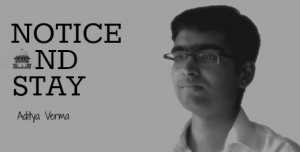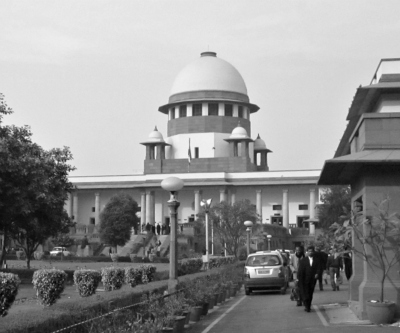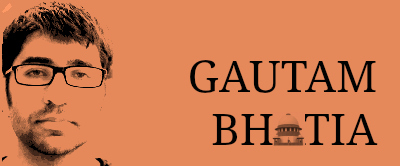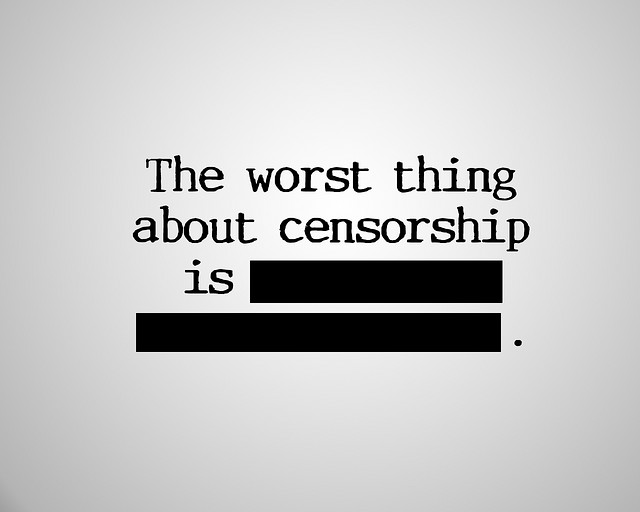 Two cases that the Supreme Court has been hearing during the last few weeks do not have anything to do with each other at first glance – the legality of the Aadhaar card scheme (“the Aadhaar case” – including Writ Petition (C) No 494 of 2012) and the constitutionality of the law of criminal defamation (the “criminal defamation case” – including Writ Petition (Crl) No 184 of 2014). Both are complex cases but my focus is on the contradiction about the right to privacy arising from the arguments made on behalf of the Union in both these cases.
Two cases that the Supreme Court has been hearing during the last few weeks do not have anything to do with each other at first glance – the legality of the Aadhaar card scheme (“the Aadhaar case” – including Writ Petition (C) No 494 of 2012) and the constitutionality of the law of criminal defamation (the “criminal defamation case” – including Writ Petition (Crl) No 184 of 2014). Both are complex cases but my focus is on the contradiction about the right to privacy arising from the arguments made on behalf of the Union in both these cases.
The Aadhaar case
In the Aadhaar case, the Union has argued that the right to privacy in India is not a fundamental right. On August 11, 2015, a three-judge bench has directed the registry to place the Aadhaar case before the Chief Justice of India so that a larger bench (of at least five judges) can hear it. The order of the three-judge bench records the submission on behalf of the Union as follows:
“…in view of the judgments of this Court in M.P. Sharma & Others v. Satish Chandra & Others, AIR 1954 SC 300 and Kharak Singh v. State of U.P. & Others, AIR 1963 SC 1295, (decided by Eight and Six Judges respectively) the legal position regarding the existence of the fundamental right to privacy is doubtful. Further… in a catena of decisions of this Court rendered subsequently, this Court referred to “right to privacy”, contrary to the judgments in the abovementioned cases which resulted in a jurisprudentially impermissible divergence of judicial opinions.”
While we are not concerned here with whether the right to privacy is a fundamental right in India, it is fair to say that if it were to be held not to be a fundamental right, it would be difficult to justify the existence of a right to privacy in any sense in Indian law, unless Parliament enacted legislation to create such a right by statute. The right to privacy is not a right at common law, which goes also to suggest that there is no common law tort that arises out of a violation of privacy per se.
We will not analyse the various judgments of the Supreme Court on this issue here, but it is safe to assume that even the ‘tortious’ right to privacy in India has found life essentially as a corollary of the argument that the right to privacy is a fundamental right. If it is found not to be a fundamental right, there would be no legal basis for the ‘tortious’ right to privacy to survive.
The criminal defamation case
In the criminal defamation case, it has been argued on behalf of the Union that one of the justifications for the law of criminal defamation (Sections 499 and 500 of the Indian Penal Code, 1860) is that it deters undesirable intrusion into a person’s private life. As this report indicates:
“The Centre on Thursday told the Supreme Court that live-in relationships should be seen as an “acceptable norm,” and pointed to how reputations of public personalities are often sullied in public because someone pried into their private life… What a public figure does in the evening at his home, I don’t think it would serve any public good even if it is the truth. Public figure is known for discharge of public functions, actions and transaction of business. This [live-in relationship] is matter of private life. There is distinction between conduct in private and public life.”
Again, while we are not concerned here with whether the law of criminal defamation is constitutionally valid, it is fair to say that this particular justification for it strongly hints at protecting a person’s privacy. The Supreme Court may decide that there are other justifications for the law of criminal defamation, but it would be difficult to argue that one of those justifications is the protection of a person’s privacy, unless it also accepted that that person has a right to privacy in the first place.
The contradiction
So, is there, or isn’t there a right to privacy in India? In the Aadhaar case, the Union’s argument is that there isn’t. However, in the criminal defamation case, the Union’s argument assumes that there is. It will be interesting to see how the Supreme Court eventually resolves this question, which arises independently in each case.
Bear in mind that it is theoretically possible for it to be decided, without inconsistency, that the right to privacy is not a fundamental right in India – indeed, it is not a right at all – and at the same time, to uphold the constitutional validity of the law of criminal defamation in India, as long as the protection of a person’s privacy is not one of the justifications for that law. Equally, it can be said without inconsistency that the right to privacy is a fundamental right in India, but the law of criminal defamation is constitutionally unsound, despite one of its purposes being the protection of a person’s privacy.
Of course, there is no fear of contradiction in the law as far as the right to privacy is concerned if it is held that:
– the right to privacy is not a fundamental right, and the law of criminal defamation is constitutionally invalid, or
– conversely, the right to privacy is a fundamental right, and the law of criminal defamation is found to be constitutionally valid
Some readers must be thinking, “What about privacy and the restriction on access to internet pornography?” All of this is for the Supreme Court to iron out. Rather ironically, privacy seems to be everywhere these days!
(Aditya Verma is an advocate based in New Delhi.)





